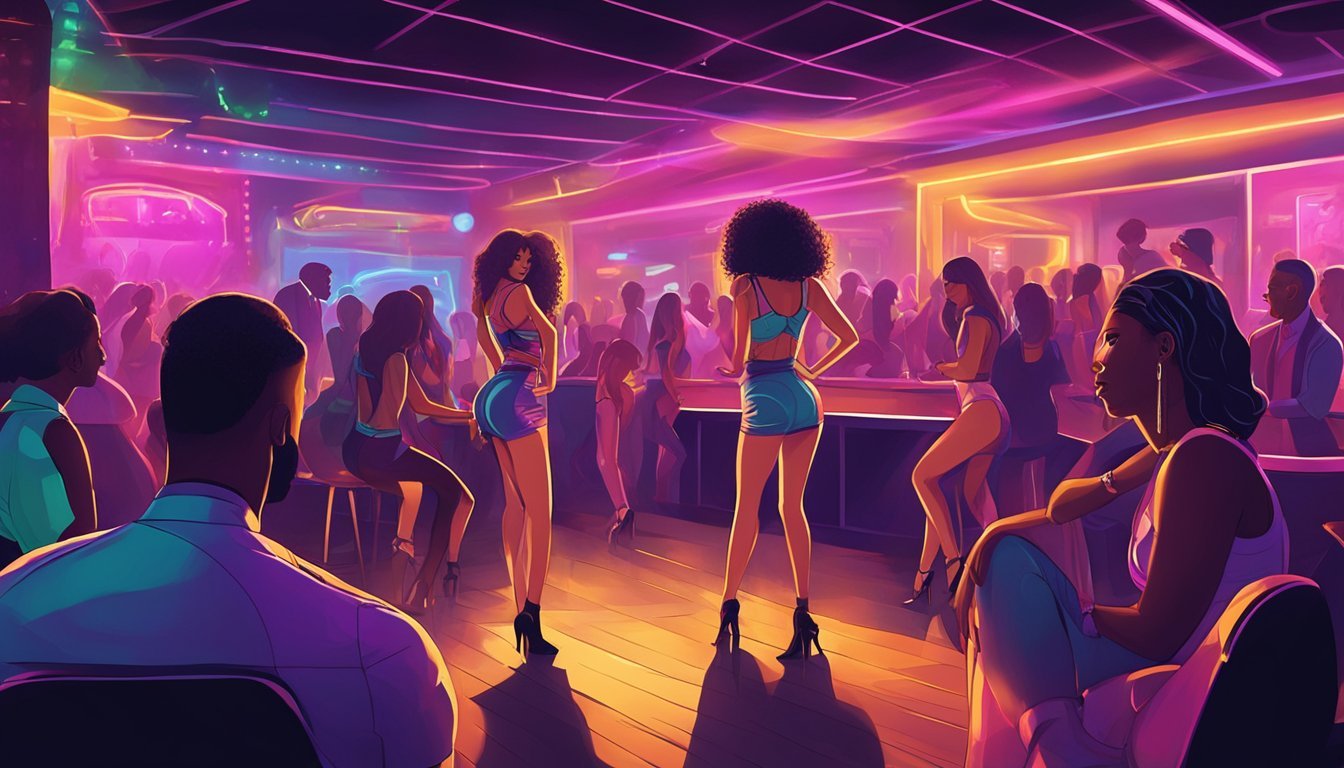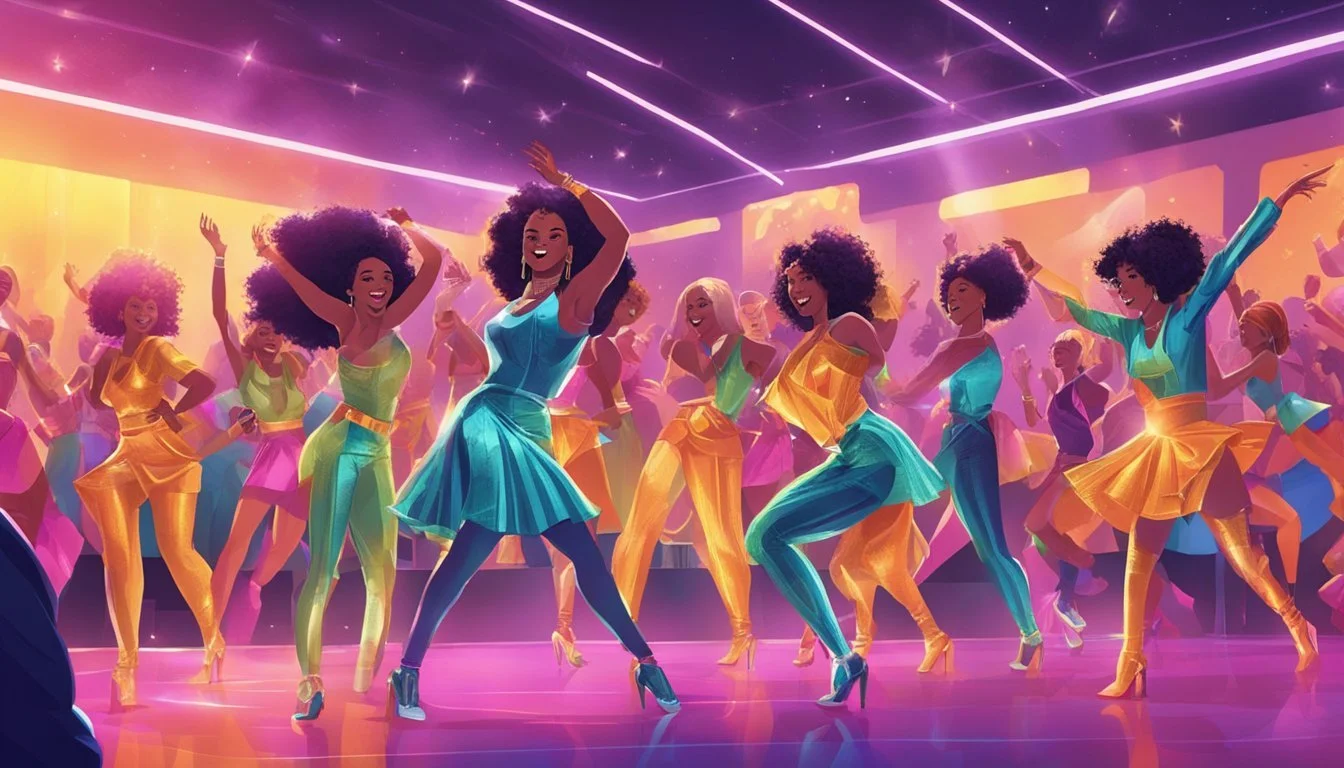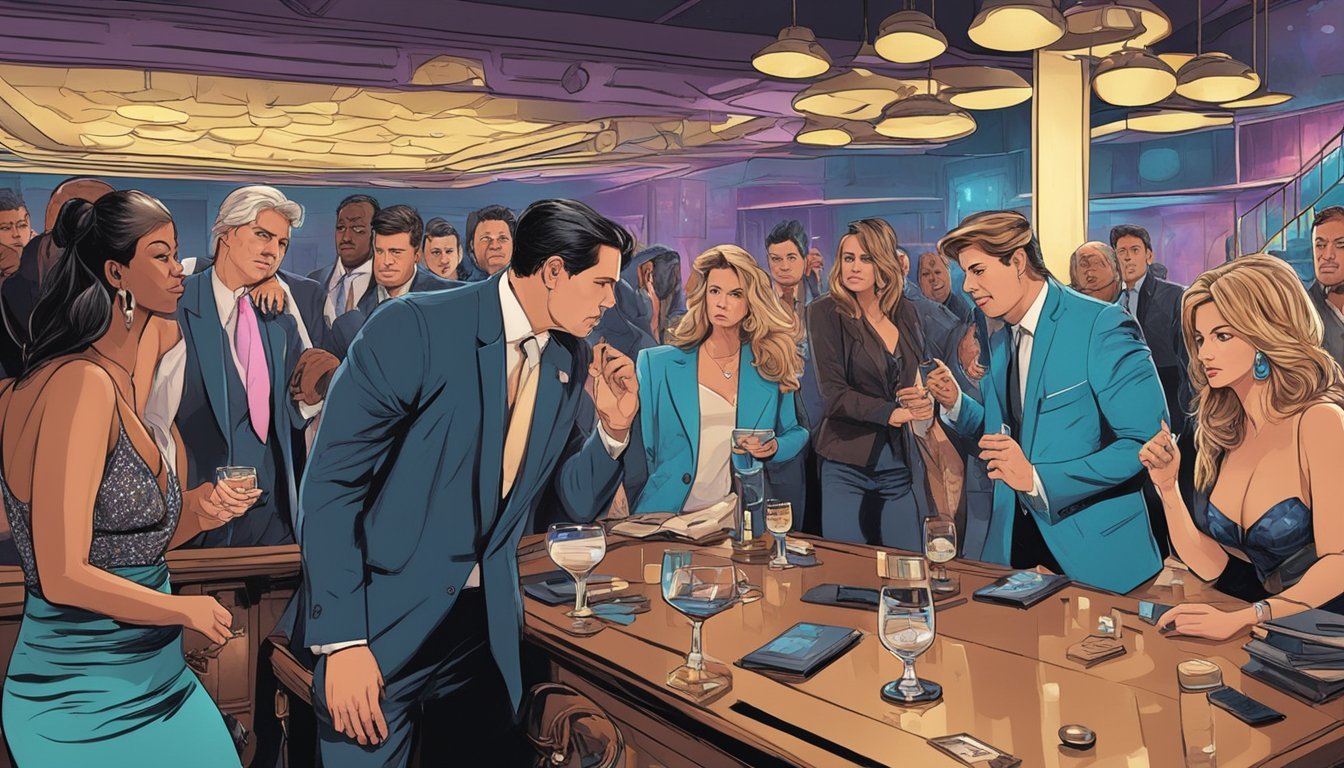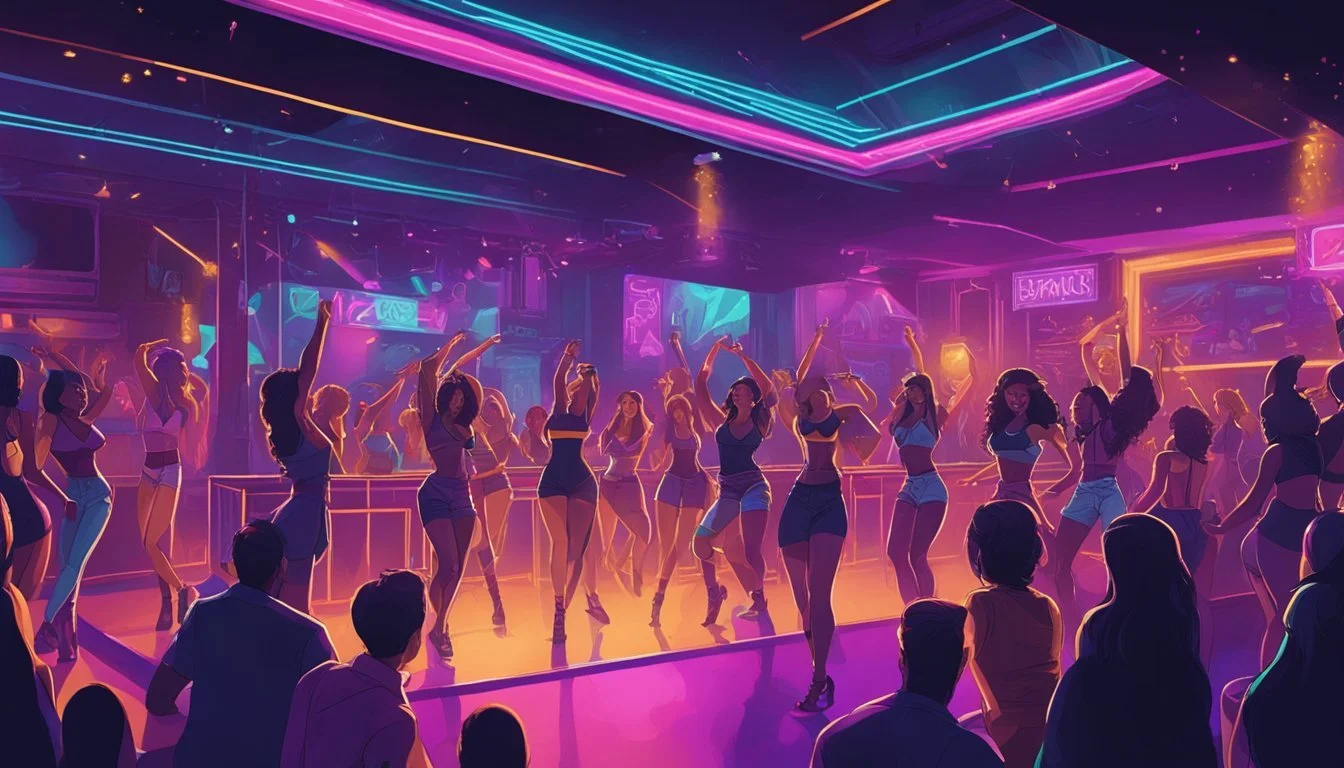From Strip Clubs to Scams: The True Story of 'Hustlers'
Unveiling the Real Events Behind the Hollywood Hit
The 2019 film "Hustlers" captivated audiences with its glitzy portrayal of strippers-turned-scammers, but the true story behind the movie is even more shocking. Based on a 2015 New York Magazine article, the film depicts a group of exotic dancers who drugged wealthy men and charged exorbitant amounts to their credit cards.
The real-life scam involved Roslyn Keo and Samantha Barbash, who devised a scheme to target rich clientele at New York City strip clubs. Their operation expanded to include other dancers and even hired women to lure unsuspecting victims. The group's tactics ranged from spiking drinks with drugs to manipulating intoxicated men into spending thousands of dollars in a single night.
Jennifer Lopez's portrayal of the ringleader brought widespread attention to this criminal enterprise that had previously made headlines in New York tabloids. The movie adaptation sheds light on the complex motivations and circumstances that led these women to cross legal and ethical boundaries in pursuit of financial gain.
The Inspiration Behind 'Hustlers'
The film 'Hustlers' draws inspiration from a captivating real-life story that first gained attention through a New York Magazine article. This tale of former strip club employees turned scam artists caught the eye of Hollywood, leading to a star-studded adaptation.
Origin Story: New York Magazine Article
Jessica Pressler's 2015 article "The Hustlers at Scores" in New York Magazine brought the incredible true story to light. The piece detailed the exploits of a group of exotic dancers who devised a scheme to con wealthy men out of money. Pressler's in-depth reporting and vivid storytelling captured the complexities of the women's lives and motivations.
The article's popularity and compelling narrative quickly attracted interest from filmmakers. It provided a solid foundation for the movie's script, offering a mix of crime, drama, and social commentary.
The Real Women: Portrayed by A-List Stars
'Hustlers' features an all-star cast bringing the real-life characters to the big screen. Jennifer Lopez portrays Ramona Vega, a character inspired by Samantha Barbash, one of the scheme's alleged ringleaders. Constance Wu takes on the role of Destiny, based on Roselyn Keo, who became a key informant in the case.
The film also stars Cardi B, drawing from her own experiences as a former stripper to add authenticity to her role. Julia Stiles plays a character based on Jessica Pressler, the journalist who broke the story. This blend of Hollywood talent and real-world inspiration helped bring the complex tale to life for audiences.
The Main Cast and Characters
The film "Hustlers" features a star-studded ensemble cast portraying the real-life figures involved in the infamous strip club scam. These talented actors bring depth and nuance to their roles, capturing the complexities of the characters they represent.
Jennifer Lopez as Ramona
Jennifer Lopez delivers a powerful performance as Ramona, the charismatic ringleader based on Samantha Barbash. Lopez's portrayal showcases Ramona's cunning intelligence and magnetic personality. She embodies the character's drive and ambition, highlighting how Ramona masterminds the scheme to drug and rob wealthy clients.
Lopez's preparation for the role included rigorous pole dancing training. Her dedication shines through in the film's impressive dance sequences. The actress captures Ramona's maternal instincts towards her fellow dancers, as well as her ruthless determination to succeed at any cost.
Constance Wu as Destiny
Constance Wu stars as Destiny, a character inspired by Roselyn Keo. Wu portrays Destiny's journey from a struggling single mother to a key player in the criminal enterprise. Her performance emphasizes Destiny's internal conflict between her desire for financial stability and her moral reservations about the scam.
Wu's chemistry with Lopez is a highlight of the film. Their on-screen relationship mirrors the complex dynamic between Keo and Barbash in real life. Wu skillfully conveys Destiny's vulnerability and growth throughout the story, making her a relatable and sympathetic character for audiences.
Supporting Roles and Special Appearances
The supporting cast adds depth and authenticity to the "Hustlers" world. Lili Reinhart and Keke Palmer play fellow strippers involved in the scheme, bringing humor and heart to their roles. Lizzo and Cardi B make memorable cameo appearances, lending their real-life strip club experience to create a convincing atmosphere.
Usher appears as himself in a pivotal scene set during the club's heyday. His presence emphasizes the glamour and excess of the pre-2008 financial crisis era. These supporting performances and cameos enhance the film's authenticity and provide a rich backdrop for the main characters' story to unfold.
The True Events that Inspired the Film
The real-life story behind "Hustlers" involves a group of enterprising strippers who targeted wealthy men in New York City. Their scheme blended seduction, drugs, and fraud in a daring plot that ultimately led to criminal charges.
The Women of Scores
Samantha Barbash and Roselyn Keo were key figures in the scam that unfolded at Scores, a high-end strip club in Manhattan. Barbash, known as "Samantha Foxx," was a veteran dancer who recruited others into the operation. Keo, initially hesitant, eventually became a central player.
The women capitalized on their connections to Wall Street clients, many of whom frequented the club. They leveraged their charm and inside knowledge of the financial world to target men they believed could afford to be scammed.
The Operation: Drugging and Duping Wealthy Men
The scheme involved spiking men's drinks with a mix of MDMA and ketamine. Once incapacitated, the victims were taken to strip clubs where the women ran up massive charges on their credit cards.
The operation peaked after the 2008 financial crisis. The women justified their actions as revenge against Wall Street for the economic downturn. They faced charges including grand larceny and conspiracy.
Victims often woke up with no memory of the night, finding credit card bills for tens of thousands of dollars. The brazen nature of the crimes and the women's Robin Hood-like justifications captured public attention, inspiring both the magazine article and film.
Legal Aftermath and Public Reaction
The "Hustlers" case had significant legal consequences and garnered intense media attention. Court proceedings revealed the extent of the scam, while public fascination grew around the women involved.
Court Cases and Plea Deals
Samantha Barbash and Roselyn Keo faced multiple charges for their roles in the scheme. Barbash pleaded guilty to conspiracy, assault, and grand larceny in 2017. She received 5 years probation and was ordered to forfeit $300,000. Keo also took a plea deal, admitting to grand larceny and attempted assault. She avoided jail time by agreeing to testify against her co-defendants.
American Express played a crucial role in the investigation, flagging suspicious charges and cooperating with authorities. The credit card company's evidence proved instrumental in building the case against the women.
The Media Frenzy and Life After the Trial
The New York Post extensively covered the story, dubbing it the "stripper scam" case. Media outlets latched onto the sensational aspects, highlighting the women's backgrounds and lavish lifestyles. Public reaction was mixed, with some viewing the defendants as clever anti-heroes and others as criminals who preyed on vulnerable men.
Post-trial, Barbash and Keo leveraged their notoriety. Barbash wrote a book about her experiences, while Keo shared her story through various media appearances. The case's cultural impact grew, eventually inspiring the "Hustlers" film adaptation.
Themes and Cultural Commentary
"Hustlers" explores complex dynamics of power, gender, and economics in modern society. It raises provocative questions about exploitation, empowerment, and survival in a capitalist system.
Empowerment Versus Exploitation
The dancers in "Hustlers" initially view their work as empowering. They gain financial independence and control over their bodies. However, their actions blur ethical lines. By drugging and robbing clients, they become exploiters themselves.
This role reversal challenges simplistic views of victim and victimizer. It forces viewers to consider the societal factors that drive people to extreme measures. The film doesn't glorify the women's crimes, but contextualizes them within broader systems of inequality.
Gender Dynamics and Financial Struggle
"Hustlers" examines how gender and economic pressures intersect. The 2008 financial crisis serves as a backdrop, highlighting the precarious position of working-class women.
The strippers target wealthy Wall Street men, inverting traditional power dynamics. This reflects real tensions between gender privilege and class struggle. The film asks: Who are the real criminals - desperate women or greedy bankers?
It also depicts female friendship as a source of strength and survival. The dancers form a makeshift family, supporting each other in a harsh world. This bond complicates their moral choices and motivations.
Production and Cinematic Elements
"Hustlers" brought the true story of enterprising strippers to life through innovative direction, captivating music, and a distinct visual style. These elements combined to create a film that was both critically acclaimed and commercially successful.
Direction by Lorene Scafaria
Lorene Scafaria's direction of "Hustlers" earned widespread praise. She approached the material with a nuanced perspective, avoiding exploitation while highlighting the characters' complexity. Scafaria's screenplay adaptation stayed true to the essence of the original New York Magazine article.
Her attention to detail shone through in the film's authentic portrayal of strip club culture and the financial crisis backdrop. Scafaria's decision to frame the story through Destiny's eyes provided a personal entry point for viewers.
Music and Choreography
The soundtrack and choreography in "Hustlers" played crucial roles in establishing the film's atmosphere. A mix of popular hits and original compositions captured the energy of the strip club scenes and the emotional beats of the story.
Jennifer Lopez's pole dancing routines, particularly her showstopping entrance to Fiona Apple's "Criminal," became instant standouts. The choreography, developed through months of rigorous training, showcased both athleticism and artistry.
Music supervisor Jason Markey curated a playlist that spanned from 2007 to 2014, enhancing the period-specific feel of each scene.
Visual and Narrative Style
"Hustlers" employed a dynamic visual style to underscore its themes of power and perception. Cinematographer Todd Banhazl utilized contrasting lighting schemes to differentiate the glitzy club environment from the characters' personal lives.
The film's narrative structure, alternating between past events and present-day interviews, created tension and intrigue. This approach allowed for a deeper exploration of the characters' motivations and the consequences of their actions.
Costume design played a significant role, with the characters' outfits reflecting their evolving status and self-perception throughout the story.
The Cultural Impact of 'Hustlers'
'Hustlers' sparked widespread discussions about gender, power dynamics, and the realities of sex work in America. The film's portrayal of these complex issues resonated deeply with audiences and critics alike.
Influence on Pop Culture
'Hustlers' made waves in popular culture, becoming a significant touchstone for conversations about female empowerment and agency. The film's stylish aesthetics and memorable performances, particularly Jennifer Lopez's, quickly became iconic. Fashion trends inspired by the movie's costuming emerged, with pole dancing-inspired workouts gaining popularity.
Music from the film's soundtrack saw a resurgence on streaming platforms. Social media buzzed with memes and quotes from the movie, further cementing its place in the cultural zeitgeist. The film also inspired renewed interest in the true story behind it, leading to increased readership of the original New York Magazine article.
Conversations on Sex Work and Dancer Rights
'Hustlers' brought the often-overlooked topic of sex workers' rights to the forefront of public discourse. The film sparked debates about the legal status of sex work and the safety of those in the industry. Many advocates used the movie as a platform to discuss the need for better protections and labor rights for exotic dancers and other sex workers.
The movie's portrayal of the economic motivations behind sex work challenged stereotypes and humanized its characters. This led to more nuanced discussions about the socioeconomic factors that influence entry into the industry. Some critics praised the film for highlighting the sisterhood and support networks within the dancing community.
Critiques and Reviews
"Hustlers" garnered significant attention from critics and audiences alike, sparking discussions about its portrayal of sex workers and its cinematic merits.
Critical Acclaim and Controversies
The film received largely positive reviews from critics. Many praised Jennifer Lopez's performance as career-defining, with some suggesting it was worthy of awards consideration. The Hollywood Reporter called it "a punchy, energetic and altogether entertaining look at naked ambition."
Critics applauded the film's nuanced portrayal of its characters, avoiding one-dimensional depictions of strippers. However, some controversy arose over the film's depiction of criminal activities and its potential glamorization of scamming.
The movie's exploration of female empowerment and economic inequality resonated with many reviewers. Some critics noted the film's visual style and direction by Lorene Scafaria as particular strengths.
Audience Reception and Box Office Performance
"Hustlers" proved to be a commercial success, grossing over $157 million worldwide against a budget of $20.7 million. The film's opening weekend saw it earn $33.2 million domestically, exceeding expectations.
Audiences responded positively to the film's blend of drama, comedy, and crime elements. CinemaScore reported an "B-" grade from moviegoers, indicating generally favorable reactions.
The movie's success was attributed to strong word-of-mouth and the star power of its cast, particularly Jennifer Lopez. It performed well with diverse audiences, appealing to both women and men across various age groups.
Social media buzz played a significant role in driving interest and ticket sales. Many viewers praised the film's entertainment value and its exploration of complex themes.








